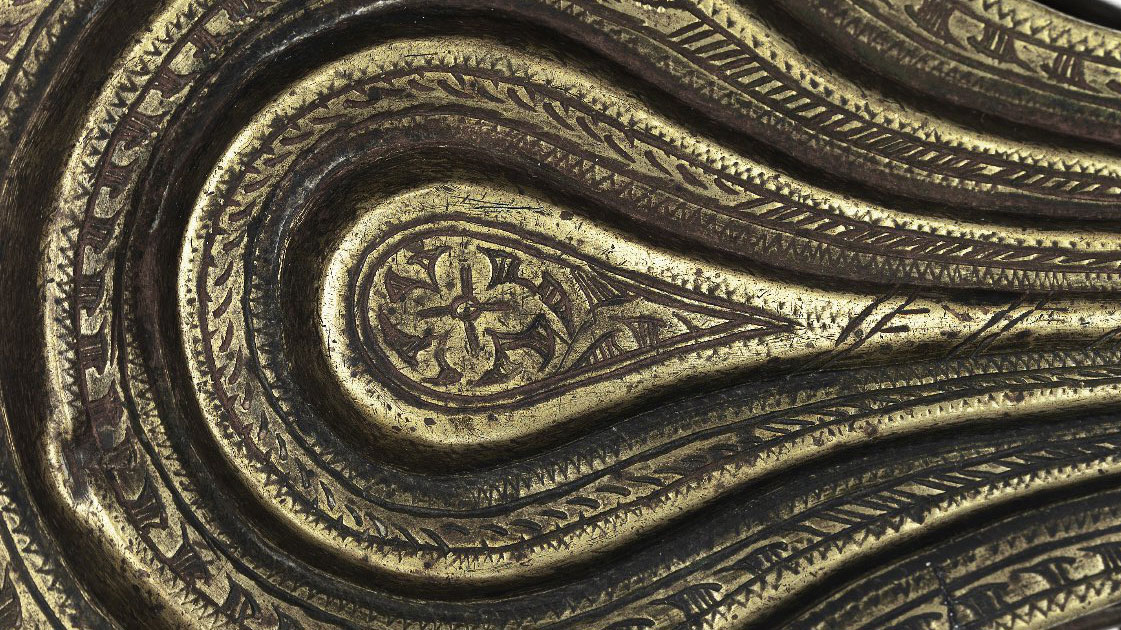A large part of the collection was purchased in 1912 from art dealers in London and Hamburg; many of these objects were collected in the Belgian Congo (now the Democratic Republic of Congo) by the famous German ethnographer Leo Frobenius.
A fair amount also came from missionaries working in Africa during the first three decades of the 20th century. This collection of sculpture, masks, textiles, utilitarian objects, armaments and ceramics dates from 17th century to the 20th century are recognized as superb examples of the canons of African Art. The exceptional holdings are from all regions of Africa, with a concentration of artifacts from the Democratic Republic of the Congo, Gabon, Angola, Morocco, Sierra Leone, Ivory Coast, Senegal, Nigeria, Kenya, Tanzania, Ethiopia, South Africa, Namibia, Botswana and Madagascar.
Section Highlights
This collection of sculpture, masks, textiles, utilitarian objects, armaments, and ceramics dating from the 17th century to the 20th century are recognized as superb examples of the canons of African Art.
West Africa
Benin Kingdom
Specific collections of note include the 17th – 20th century bronzes and ivories from the Benin Kingdom. The Benin Kingdom was one of West Africa's most powerful political states. The Penn Museum's African Gallery exhibits the largest number of artifacts from the kingdom in Philadelphia.
Sierra Leone
A collection of artifacts from Sherbro Island, Sierra Leone was made by H. U. Hall during a University Museum sponsored expedition. The Penn Museum also holds a collection of 700 artifacts related to the Poro Secret Society and the Sande secret Society from Sherbro Island, Sierra Leone which was made by Henry Usher Hall in 1936-37.
H.U. Hall, Curator of General Ethnology, led the first Museum-sponsored expedition to sub-Saharan Africa. He spent seven months conducting ethnographic research among the Sherbro peoples of Sierra Leone. It is perhaps the most systematically documented collection in the African Section. Hall's notes and photographs are held in the Museum's archive. The collection consists of textiles, sculpture, artifacts related to subsistence and household items, secret society and examples of medicine bundles. Hall's papers include field notes, bibliographies, and textual commentaries that provide ethnographic information about the way of life of the Sherbro people and others--including the Mende, Krim, and Temne peoples--who lived among them. Hall also published a book on the results of his work, The Sherbro of Sierra Leone (Philadelphia: University of Pennsylvania Press, 1938).
As a result, the Penn Museum has one of the most extensive Sherbro Island collections in the world. Collected by the H.U. Hall Expedition of 1936-37, it differs from many collections of African art in its meticulous documentation and its comprehensiveness. Unlike many collectors the Hall expedition set out to create a well-rounded study collection of the material culture of Sherbro Island.
Central Africa
The Central African collection includes approximately 3000 artifacts from the Democratic Republic of Congo (formerly the Belgian Congo). The majority of these artifacts were collected by the German ethnographer Leo Viktor Frobenius on his expedition to the Kasai district of the Congo in 1906. His collection illustrates the diverse sculptural forms found among the different cultural groups in the Central African region. Some of the cultures represented in the collection are the Kuba, Kongo, Luba, Suku, Yaka, Pende, Teke, Chokwe, and Luluwa.
North Africa
One of the lesser known collection within the African Section is the Moroccan collection. Dr. and Mrs. Talcott Williams travelled to Morocco in 1898 and returned with approximately 600 objects to document the cultures in Morocco. The collection consists of clothing, shoes, rugs, blankets, weapons, jewelry, pottery, baskets, cooking pots. This thorough collection of objects representing daily life was well documented by Dr. Williams who also collected on behalf of the Smithsonian.
The African collection continues to build its holdings via carefully evaluated donations. In 2003, the museum acquired a gift of 1500 artifacts from the Philadelphia Commercial Museum (also known as the Philadelphia Civic Center Museum). Many of these artifacts in that collection were exhibited at the Paris Exposition Universelle Paris 1900 and the French Colonial Exposition of 1889. This acquisition provided the Penn Museum with the opportunity to further enhance its collection of textiles and sculpture as well as form new collection areas such as French Somaliland (now Djibouti) and Dahomey (now Republic of Benin).




